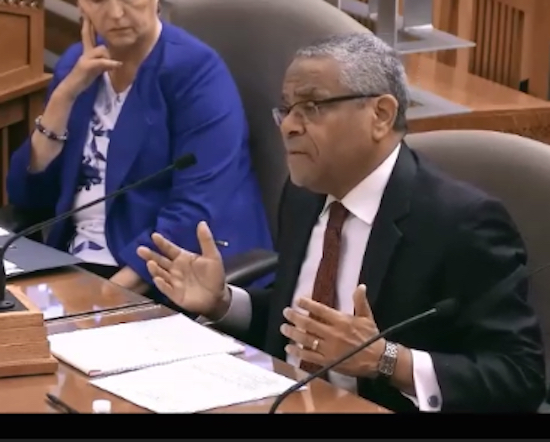The new agency charged with helping to implement and enforce the state’s school accountability and improvement system has a fresh source of money and a plan to spend it, starting this fall.
The California Collaborative for Educational Excellence, overseen by Carl Cohn, a former State Board of Education member and retired superintendent of Long Beach Unified, has been allocated $24 million in the state budget awaiting Gov. Jerry Brown’s signature. The bulk of that money will go toward statewide meetings, webinars and district tutorials on the new school and district accountability system and revised regulations for districts’ Local Control and Accountability Plans. The state board will adopt the new system in September and then apply it to districts in the fall of 2017.
The remainder of the money will be spent figuring out how to help about a half-dozen districts move forward in areas they have identified as needing improvement, said Joshua Daniels, director of outreach and communications for the agency. The agency will select districts that are struggling to meet some of the state’s priority areas and are recommended by their county superintendent. They will include a cross-section of rural and urban, large and small districts, and will help the agency define the approach it will take as the lead agency in the state’s vision of reform based on local control, Daniels said.
He said that the plan was to begin offering training workshops in mid- to late October, as the beginning of a three-year rollout. “One-off trainings are great, but they are not sufficient in themselves,” said Daniels, who formerly worked for the California School Boards Association. “They have to be followed up with some kind of ongoing support or maintenance.”
“Our hope is that all school districts and charter schools will benefit,” he said. The goal, he said, would be to get them up to speed on the changes made in the LCAP template. In particular, he said, the new agency hopes to promote more sharing of information and expertise, along with successes and challenges among districts and organizations “that may not be aware of each other.”
The Legislature wrote the agency into the new state financing system, the Local Control Funding Formula, that it passed in 2013. Its name, implying a more open, locally driven approach to fixing schools, and its creation, separate from the state Department of Education, signaled a shift in philosophy from the Washington-driven solutions under the No Child Left Behind law and previous Sacramento-driven school turnaround efforts.
The agency has been waiting for the state board to establish common metrics to begin actively working with school districts. The metrics, combining state priorities and federal requirements under the 2015 Every Student Succeeds Act, will likely include standardized test scores, student graduation and suspension rates, rates of chronic absenteeism and rates at which English learners become proficient in English. The board will also set achievement targets for each metric and expectations for yearly improvement (for an example, see draft standards for graduation rates).
Given $10 million in the 2013-14 state budget to open up shop, it still has $5 million left. The agency has a small staff – Cohn, Daniels, three more assistant directors and an executive assistant – and is run out of the Riverside County Office of Education.
At a minimum, it is statutorily required to determine how to fix the worst schools and districts: those that are the 5 percent lowest-performing schools under federal law. It must also fix, as outlined by the funding formula law, districts that fail to meet state and locally set achievement targets for three or more student subgroups in more than one of eight priority areas for three out of four years. Those priorities include academic achievement, parent involvement, school climate, student engagement and successful implementation of the state’s new academic standards.
But Cohn has said that under the shift to local control, districts should drive self-improvement, and the agency will be a resource for districts that ask for help. The agency’s role will evolve, he indicated. So far, the agency has worked with only one district, Palo Verde Unified, a small, inland district west of Joshua Tree National Park. An initial conversation to hear parents’ perspectives and hopes for student success included a community-wide book club, with a discussion of education consultant and author Michael Fullan’s book, “Coherence: The Right Drivers in Action for Schools, Districts and Systems.”
Louis Freedberg contributed to this report.
To get more reports like this one, click here to sign up for EdSource’s no-cost daily email on latest developments in education.
